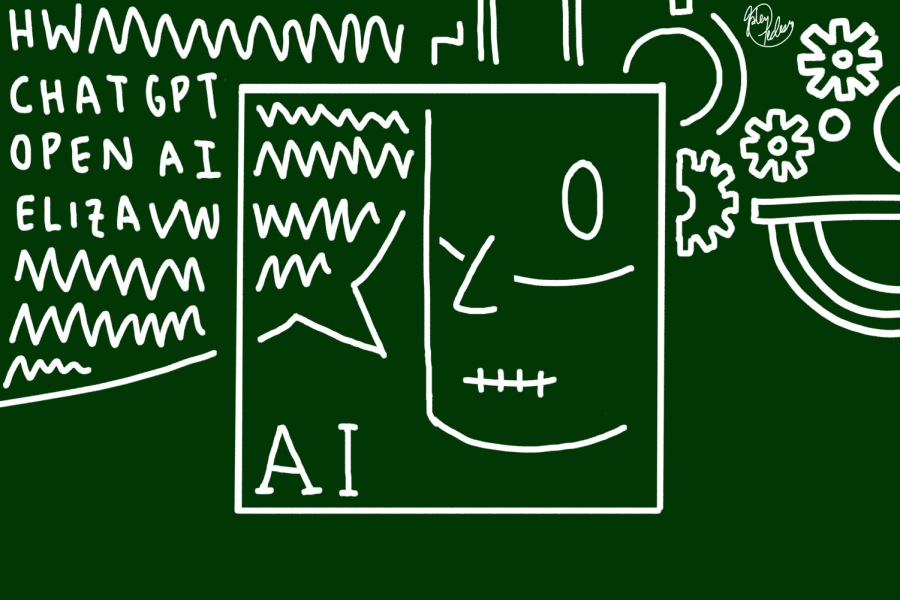AI Series: Part 3
With machines capable of creating original works, who owns the rights to these creations? How do we protect the intellectual property of human creators in a world where AI can generate results?
This is the third article in a multi-article series. In my previous articles, I discussed how AI affects our daily lives. Next, I want to explore the challenges and solutions related to intellectual property and copyright when dealing with AI. With machines capable of creating original works, who owns the rights to these creations? How do we protect the intellectual property of human creators in a world where AI can generate results?
First, can AI creations even be copyrighted? The answer is a bit more complicated than a simple “no,” as copyright law generally does not recognize them as eligible for copyright protection because the rule is designed to protect the creations of human authors. The US Copyright Office didn’t create this law with AI in mind; it was made after the “Monkey Selfie Copyright Dispute,” where a photographer tried to claim ownership of a photo taken by a monkey using his camera. There are a few exceptions to the rule, though. For example, if a human programmer or designer creates an AI system that produces work, the human creator may be able to claim copyright ownership of the work. Likewise, if a human contributes creatively to an AI-generated work, they can also claim copyright ownership. The Supreme Court has held that the requisite level of creativity “is extremely low; even a slight amount will suffice,” meaning that even minor contributions to an AI-generated work may be enough for the human contributor to claim copyright ownership. But whether specific AI creations – created wholly by algorithms, with no human involvement – should be copyrighted is still debatable. It’s a new and evolving area of law, so we’ll likely see more discussions and debates about it in the coming years.
Even with the complicated issue of copyright present, an even more difficult problem to solve regards the use of intellectual property in AI. Intellectual property is a work or invention that is the result of creativity, to which one has rights and for which one may apply for a patent, copyright, or a trademark. Sometimes, the AI system’s developer may be responsible for creating the work. In other cases, the machine may do the job without human input. This raises questions about whether or not devices can be considered creators and whether or not they should be granted intellectual property rights. Another issue that arises in similar cases is the potential for AI-generated works to infringe upon the direct intellectual property of human creators. For example, an AI system may be capable of creating pieces similar to those produced by human artists, musicians, or writers, which has led to discussion about whether or not the AI-generated work constitutes a violation of the original creator’s copyright.
The case of Hollie Mengert, a Disney illustrator whose art style was cloned by an AI system trained on 32 pieces of her work, is an example of these abstract ideas playing out in the real world. She said, “For me, personally, it feels like someone’s taking work that I’ve done, you know, things that I’ve learned, and is using it to create art that I didn’t consent to and didn’t give permission for.” As AI advances and produces art indistinguishable from human-generated work, we must reconsider how we define and protect artistic expression in the digital age. This includes having conversations about the ethical implications of this technology including the discussion on implementing more transparency and accountability are needed when using AI in creative fields.
Another one of the main challenges posed by AI-generated works is ensuring that creators are adequately recognized and compensated for their contributions. To address these concerns, some have suggested creating new legal frameworks that address the unique issues AI-generated works pose. One proposal is to create a new “machine authorship” category of copyright law that would grant intellectual property rights to works created by machines. Other solutions include using blockchain technology—which allows different types of assets to be traded and tracked— to establish ownership and control over digital assets using non-fungible tokens (NFTs for short)—representing ownership of a specific piece of digital content. By creating a blockchain-based registry for AI art, we can verify each artwork’s ownership and source, and the transactions can be securely recorded. This would make it more difficult for unauthorized parties to claim ownership of an AI artwork or sell it without the proper authorization, providing more excellent protection for the rights of the creators and owners of AI art. There are also other promising solutions for AI use, including digital watermarking.
In all, developing these legal and technological solutions is crucial to ensuring that AI-generated works are created and used responsibly and ethically and that the benefits of AI are balanced against the risks and challenges it poses to existing frameworks of creativity and ownership.
